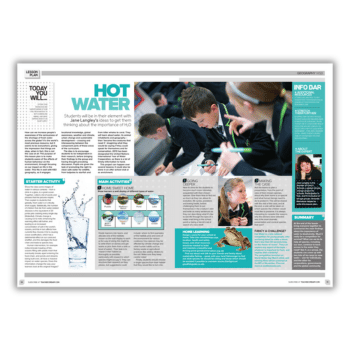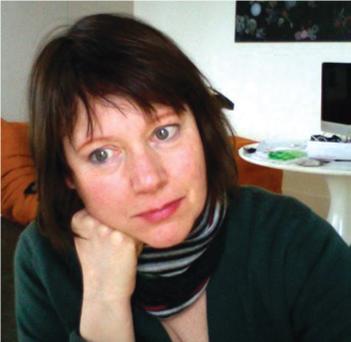Extend students’ knowledge and understanding of how vital fresh water is to both humans and animals, and what happens when it is in short supply.
How can we increase people’s awareness of the seriousness of the shortage of fresh water across the globe?
It’s the world’s most precious resource. However, it seems to be everywhere, giving the impression that things are okay. In fact, this is not the case at all.
The purpose of this lesson plan is to make students aware of the effects of human behaviour on the environment, through focusing on our impact on life in the water.
This fits in well with KS3 geography. It engages locational knowledge, global awareness, weather and climate, urban change and sustainable development. It crosses and interweaves between the component parts of these areas of the curriculum.
The idea is to encourage students to be independent in their research. They will then bring their findings to the group and have thought-provoking discussions.
Pupils need to promote the right to clean safe water for wildlife, from tadpoles to starfish and from killer whales to coral.
They will learn about water, its animal inhabitants and geography – then ‘become the creatures that need it’, imagining what they would be saying if they could speak for themselves and for conservation.
This project can happen over several lessons; it could also be done in an after-school club or as enrichment.
Starter activity
Show the class some images of water in various contexts – from a drink in a glass, to a great ocean. Together, collect a list of words and phrases that the pictures inspire.
Then explain to students that globally, fresh water is in critically short supply. Statistically, the number of children that die from water-related diseases is the equivalent of 20 jumbo jets crashing every single day (WaterAid).
Climate change is causing ice to melt, enhancing the warming effect still further, and leading to an increased concentration of salt in the world’s oceans, and this in turn affects how currents flow.
Excess CO2 is causing ocean acidification, which has a detrimental effect on our coral and shellfish, and this damages the food chain and leads to species loss.
Human intervention, for example indiscriminate trawling of fish, oceans filling with plastic trash that eventually breaks apart entering the food chain, and ponds and streams being built over, all have a massive impact on water species.
Does this information change the way your learners look at the original images?
Jane Langley is the founder of Cool it Schools. Amanda Nicholson helped to write this lesson plan.











